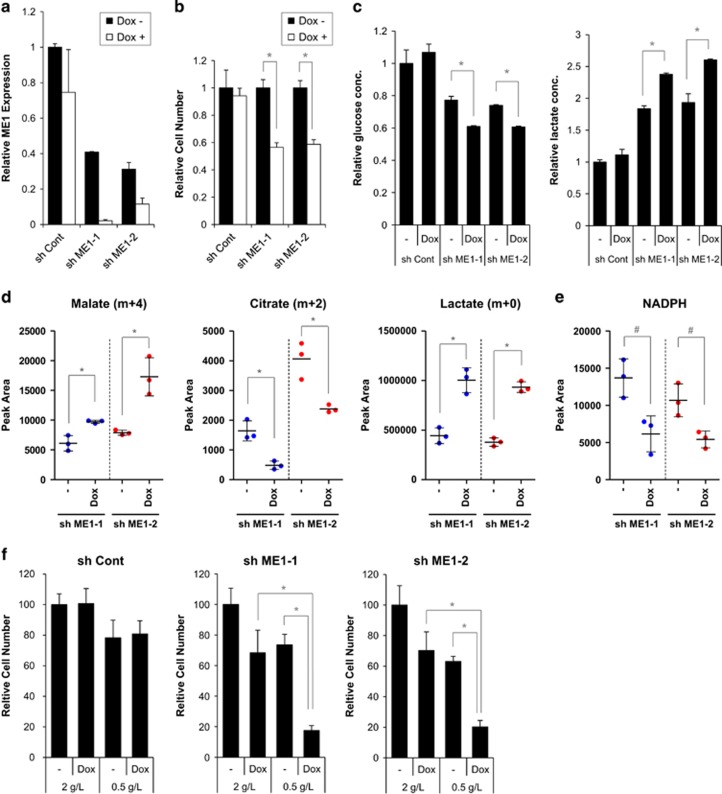Figure 6.
ME1 knockdown by shRNA induces metabolic reprograming and synergistically suppresses cancer cell growth in glucose-depleted conditions. HCT116 cell clones (sh ME1-1 and sh ME1-2), which are stably expressing tetracycline-inducible ME1 shRNA, were established. (a) Control shRNA, sh ME1-1 or sh ME1-2 clones were cultured in the media with or without 2 μg/ml doxycycline for 48 h, and ME1 expression was detected by TaqMan PCR. ME1 expression was normalised by GAPDH expression and relative ME1 expression is shown in the bar graph (n=3). (b) Cell numbers were determined 72 h with or without 2 μg/ml doxycycline. Relative cell number is shown in the bar graph (n=3, mean with s.d., t-test; *P<0.01) (c) Control shRNA, sh ME1-1 or sh ME1-2 were cultured in the media with or without 2 μg/ml doxycycline for 96 h and, d-glucose and l-lactate concentration in the media were measured. Relative glucose or lactate concentration are shown in the bar graph (n=3, mean with s.d., t-test; *P<0.01). (d,e) [U-13C, U-15N] l-glutamine isotope profiling analysis was conducted in sh ME1-1 and sh ME1-2 clones. Clones were cultured in the media with 2 g/l glucose with or without doxycycline for 72 h and labelled for additional 24 h in the glucose-depleted media with or without doxycycline. Then, metabolites and isotopes were measured. Peak area of labelled metabolites are shown in the dot graphs (n=3, t-test; *P<0.01; #P<0.05). (f) Three clones were cultured for 24 h in 2 g/l medium with or without doxycycline, and additionally cultured for 72 h in medium with 2 or 0.5 g/l glucose with or without doxycycline. Then, cell numbers were determined by cell counter (n=3, mean with s.d.; t-test; *P<0.01).

